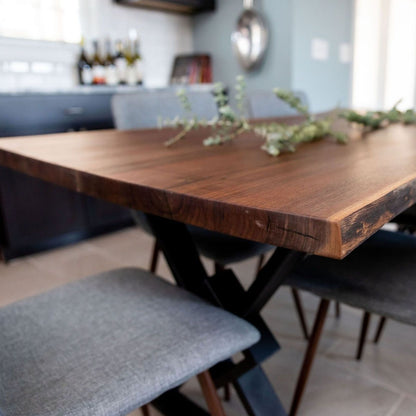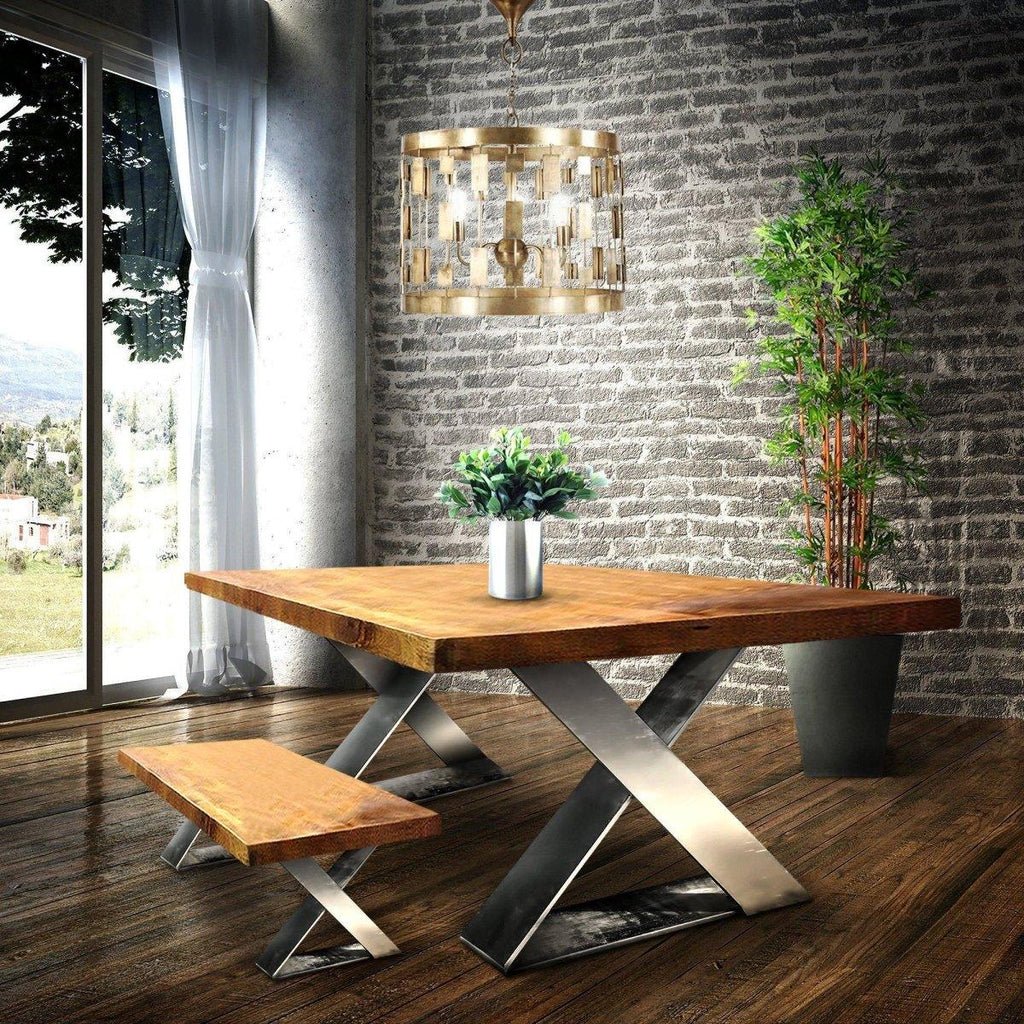From Traditional to Modern: Locate the Suitable Dining Area Table Legs for Your Style
The selection of dining-room table legs plays a pivotal duty in defining the total personality of your space, linking the space in between standard craftsmanship and contemporary looks. While traditional layouts such as cabriole and turned legs stimulate a sense of classic elegance, modern styles like barrette and geometric options offer a chance for striking aesthetic rate of interest. Evaluating the ideal balance in between these styles needs a nuanced understanding of your existing décor and individual taste. As you take into consideration these elements, the inquiry remains: exactly how can you flawlessly integrate these varied leg designs to create a harmonious eating experience?
Comprehending Table Leg Styles
The range of eating space table leg designs can substantially affect both the aesthetics and functionality of the space. Each leg style adds one-of-a-kind aesthetic components and sensible features, dealing with diverse design preferences and usage needs. Recognizing these designs is vital for choosing the best table that aligns with your overall indoor style vision.
For example, tapered legs offer a tidy, timeless look that can enhance an area's style, while stand bases offer stability and take full advantage of legroom, making them perfect for smaller rooms. Hairpin legs, a hallmark of mid-century modern-day layout, introduce an industrial panache, enabling for an airy, open feeling. Likewise, trestle legs evoke rustic beauty, offering robust assistance and a sense of timelessness.
Additionally, the choice of products plays a considerable duty. Wood legs can bring heat and structure, whereas metal choices frequently share a smooth, modern vibe. Inevitably, comprehending table leg designs is vital for creating a natural eating area that mirrors personal design while ensuring usefulness and comfort. By thoughtfully taking into consideration these aspects, you can boost both the practical and visual allure of your dining room.
Conventional Table Leg Options
When choosing dining-room table legs, conventional alternatives often embody ageless sophistication and workmanship. These layouts reflect a rich heritage and a commitment to high quality, making them suitable for those that value classic aesthetic appeals.
Among one of the most legendary standard leg styles is the cabriole leg, defined by its elegant curved shape. This design commonly includes attractive makings and is most generally located in Queen Anne and Chippendale furniture. Another popular option is the turned leg, which boasts a series of smooth, rounded shapes that provide a classic appearance while keeping security.
In addition, the straight leg, while straightforward, supplies a tough and basic structure that can blend seamlessly with a variety of tabletop designs. For those attracted to ornate outlining, claw-and-ball feet legs evoke a sense of splendour and can function as a spectacular focal point in any type of dining space.
Lastly, pedestal bases, although not purely legs, give a different typical alternative that permits enough legroom and can be beautifully sculpted. Each of these traditional leg styles adds to the total setting of a dining-room, marrying function with aesthetic charm.

Modern Table Leg Styles
Modern table leg designs offer a varied array of designs that highlight clean lines and innovative materials. These designs often prioritize capability while working as striking centerpieces within a dining area. Minimal appearances are common, with legs crafted from materials such as steel, glass, and engineered timber, which add to a airy and modern feeling.
One preferred style is the barrette leg, defined by its slim, tapered structure that supplies stability without overwhelming the table top (dining room table legs). This design is typically found in mid-century contemporary furnishings and can easily complement numerous dining table forms. An additional trend is the usage of geometric forms, where legs may handle angular or asymmetrical types, including visual rate of interest and a touch of artistry

Blending Designs for Unique Rooms
Typically, home owners look for to create special dining rooms that mirror their individual design by blending various layout components. This strategy permits the consolidation of diverse aesthetic appeals, leading to a harmonious yet distinct setting. Combining a rustic wooden table with streamlined, contemporary metal legs can produce an appealing comparison that raises the room's general appeal.
In addition, integrating vintage table legs with modern tabletops can stimulate a sense of background while preserving a modern sensibility. Such combinations not only display private preference however also motivate creativity, enabling homeowners to curate a room that feels both individual and inviting.
Shade plays a vital role in this mixing procedure; choosing table legs that enhance or contrast with the existing color design can improve aesthetic interest. Whitewashed legs can soften the boldness of a dark table surface, creating a well balanced aesthetic.
Tips for Picking the Right Legs
Selecting the right table legs is necessary for attaining both functionality and visual click for more info allure in your dining space. Begin by considering the general design of your area. Traditional settings take advantage of legs that include elaborate carvings or turned layouts, while modern spaces may require streamlined, minimalist styles.
Next, examine the elevation and security of the legs. dining room table legs. Basic table vary in between 28 to 30 inches in elevation, so ensure the legs complement this measurement for comfort. Furthermore, robust materials, such as hardwood or steel, can improve security and long life
Review the leg form too-- options include straight, tapered, or pedestal designs. Straight legs offer a classic look, while tapered legs can add a touch of elegance. Pedestal bases provide sufficient legroom and are optimal for smaller sized areas.
Final Thought
In summary, selecting the ideal eating space table legs requires cautious consideration of both contemporary and conventional Check This Out designs. By integrating this website leg style, height, and material with the total decor, a natural and welcoming ambience can be achieved.
The variety of dining room table leg designs can substantially affect both the appearances and performance of the space. Ultimately, recognizing table leg designs is necessary for creating a cohesive dining location that reflects individual style while making sure usefulness and convenience.One of the most iconic conventional leg styles is the cabriole leg, defined by its stylish rounded shape. Straight legs supply a classic look, while tapered legs can add a touch of style.In summary, selecting the perfect dining space table legs requires mindful factor to consider of both contemporary and traditional designs.